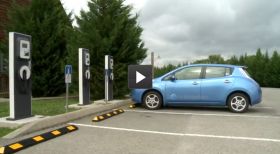
You’d be forgiven for thinking that a visit to the great outdoors – the vast Great Smoky Mountain National Park, straddling the border between Tennessee and North Carolina in America, for example – would be the perfect place for plenty of fresh air.
Not so, it seems. According to a survey carried out in 2004, it was considered the most polluted national park in the country with, it was estimated, no fewer than 150 ‘unhealthy air days’ in the previous year.
It’s not just the ten million annual visitors who were at risk but also the park’s natural plants and its local inhabitants, including one of the largest populations of black bears in the United States.
But steps are now in place to reduce pollution from visitors’ cars and trucks: a ‘highway’ of 24 EV charging points has been established at strategic locations between major cities in Tennessee and the Park’s gateway community of Townsend. Future expansion will see the installation of solar canopies in the park itself to provide clean electricity from renewable sources.
Other National Parks are following suit. Yellowstone, located primarily in Wyoming, uses the sun to power its growing fleet of electric utility vehicles while the Zion National Park – it’s in Utah, about 165 miles northeast of Las Vegas – has a canopy of solar panels that not only generates the electricity to power its fleet of battery-powered vehicles but which also provides shade for the employee car park.
By their very nature, these vast national parks are often someway from built-up areas and that can mean a round trip might be outside the potential range of an electric vehicle such as the Nissan LEAF. But thanks to this investment in an expanding charging infrastructure, EV owners can now enjoy the National Parks to their full.
And greater use of EVs to make such visits will help preserve their natural beauty for generations to come… and not to mention help visitors and inhabitants alike breathe more easily.
Credits: http://www.electrictv.net/
print Tweet
